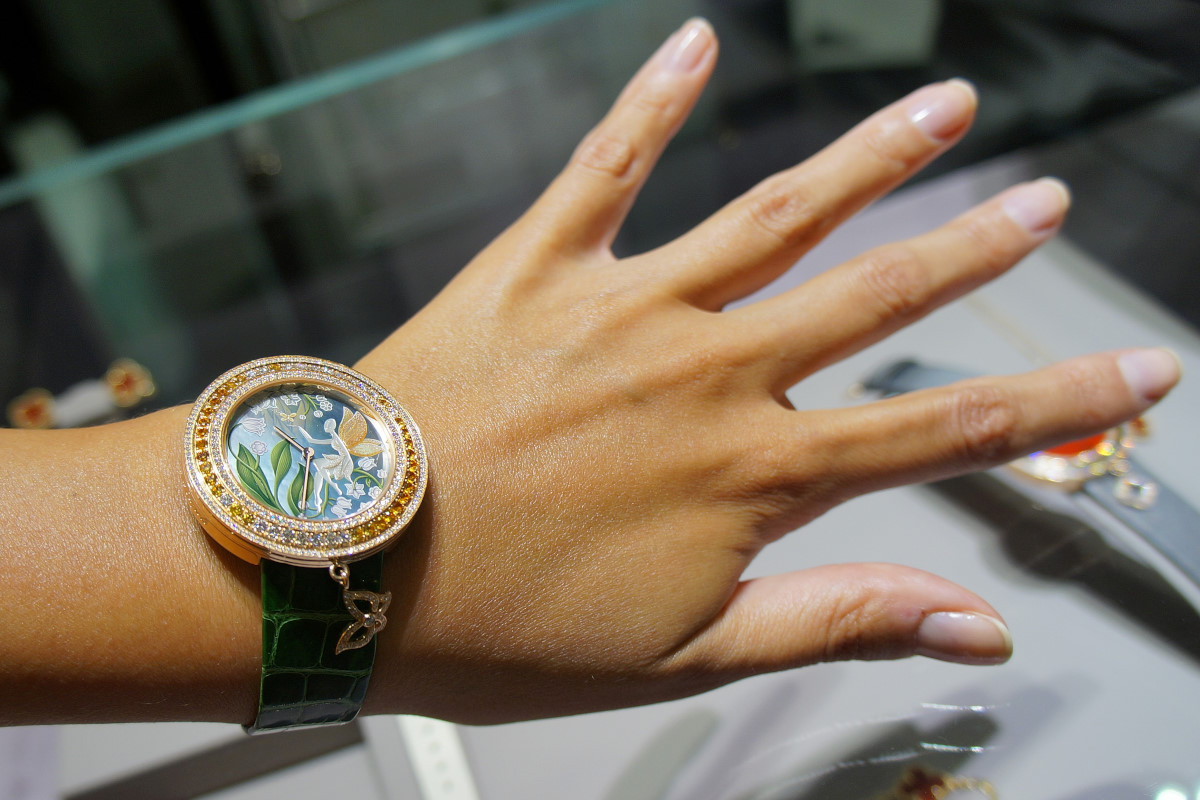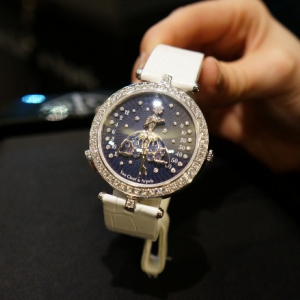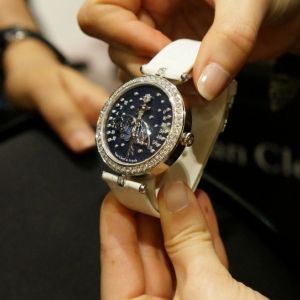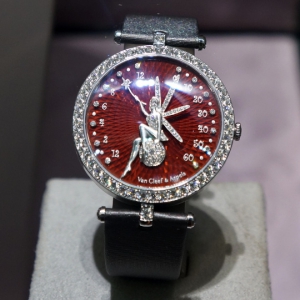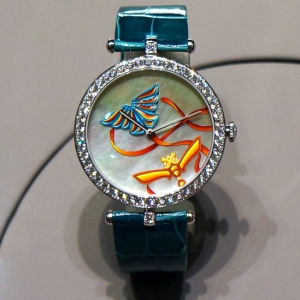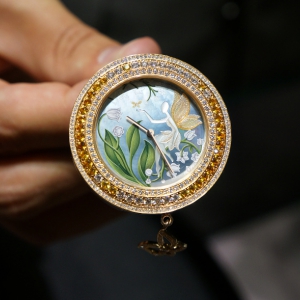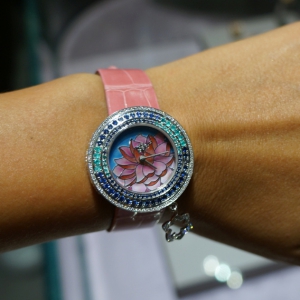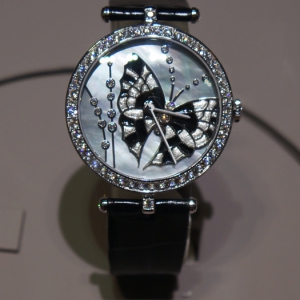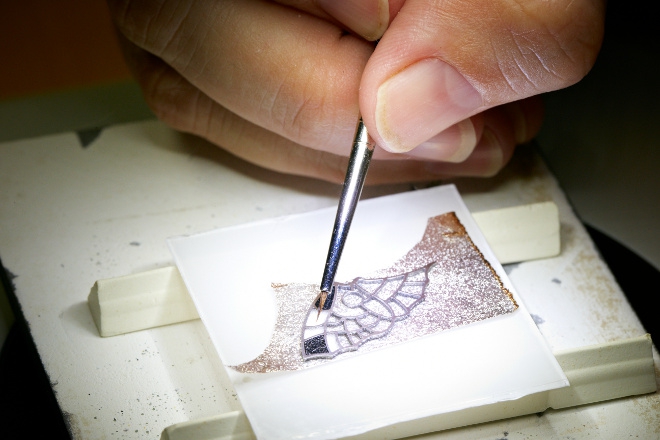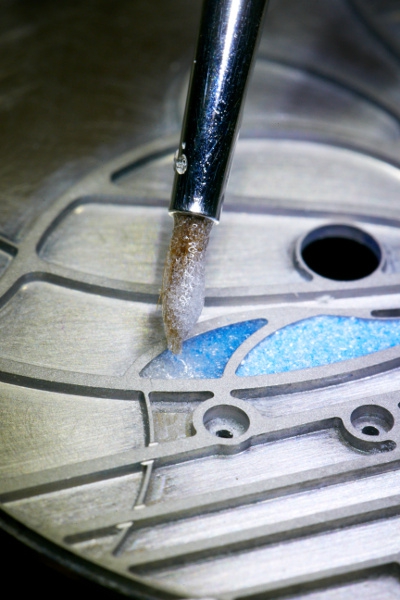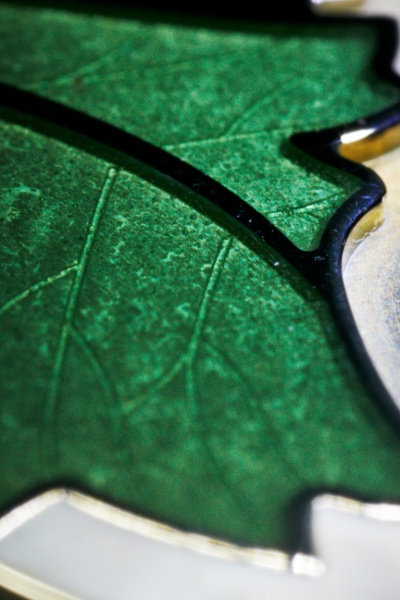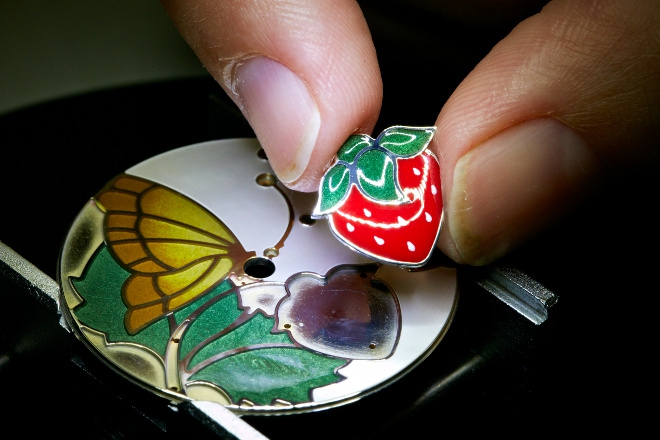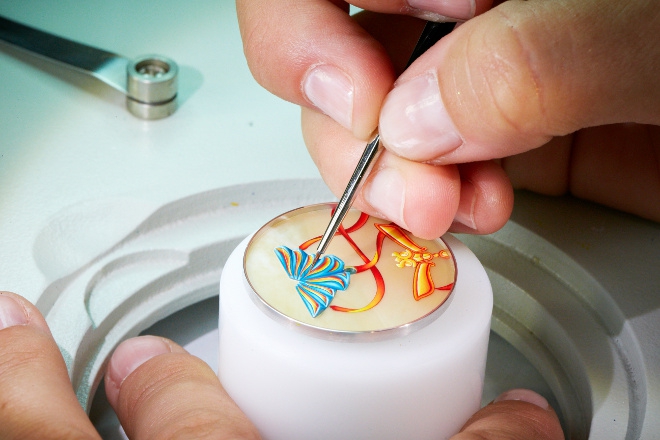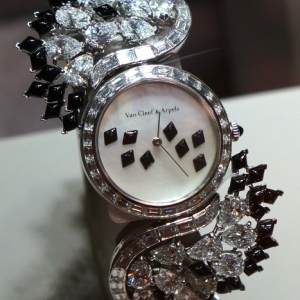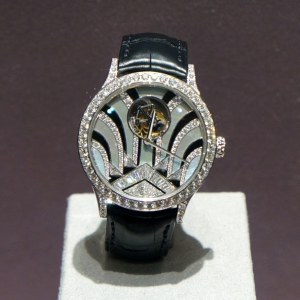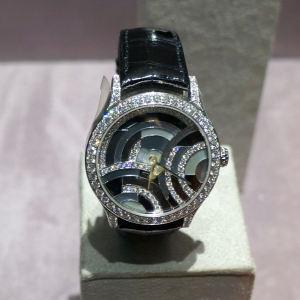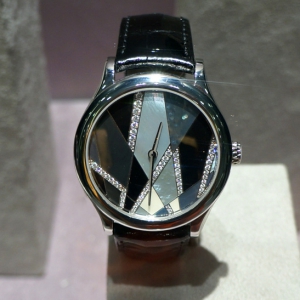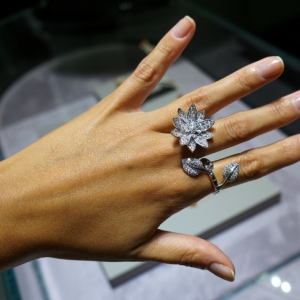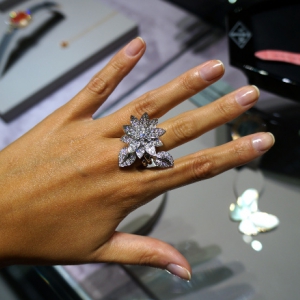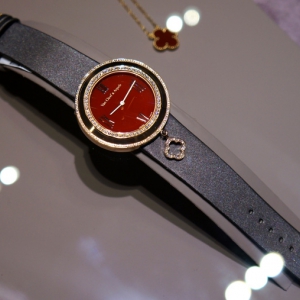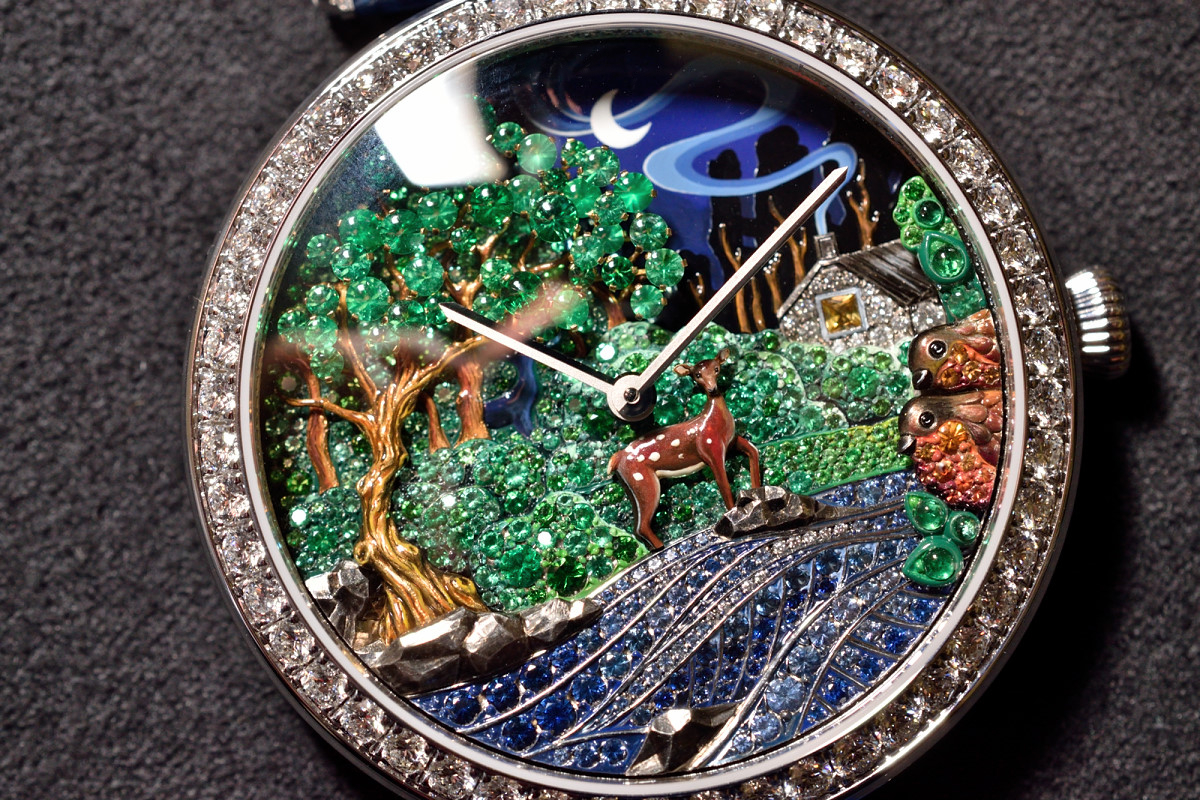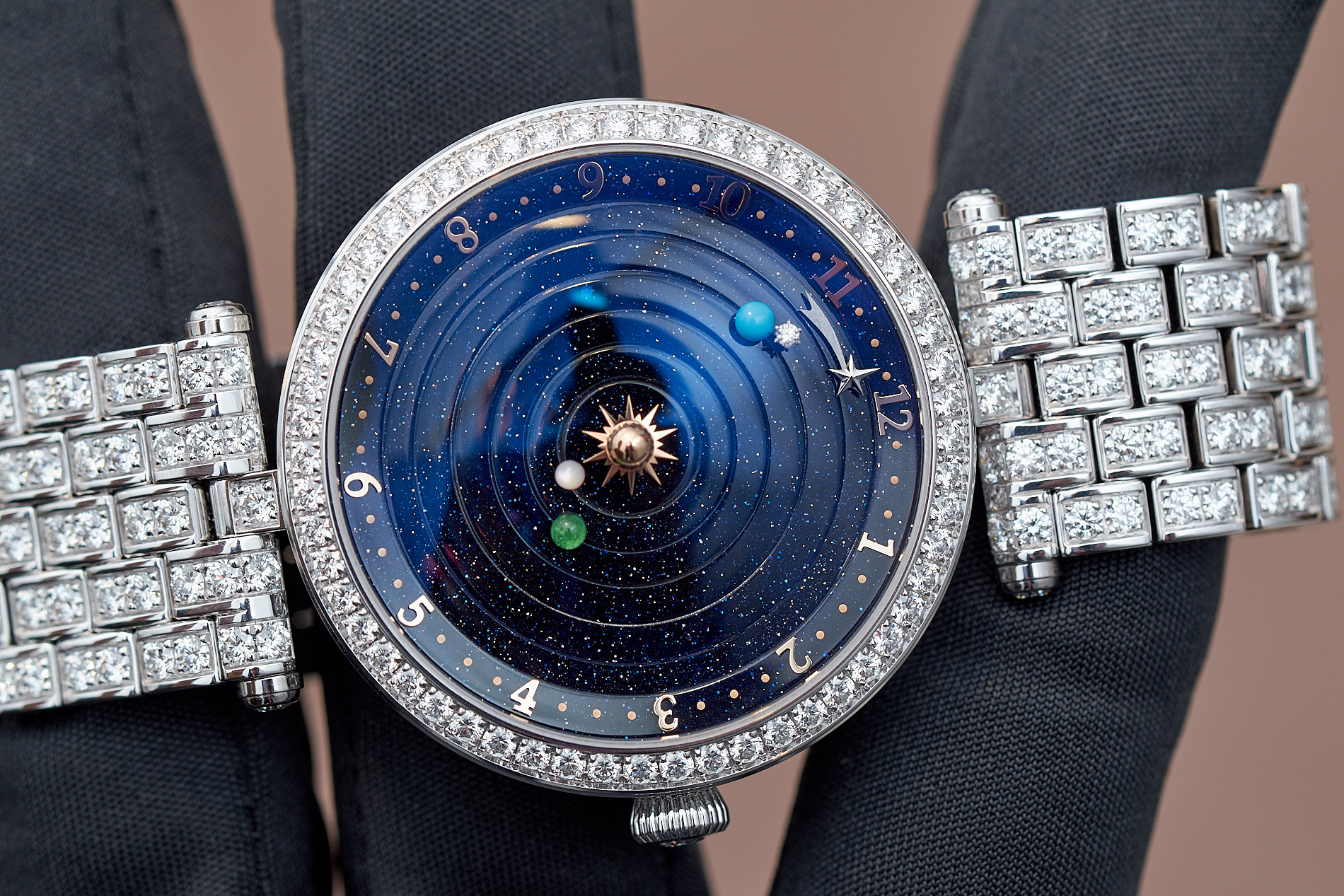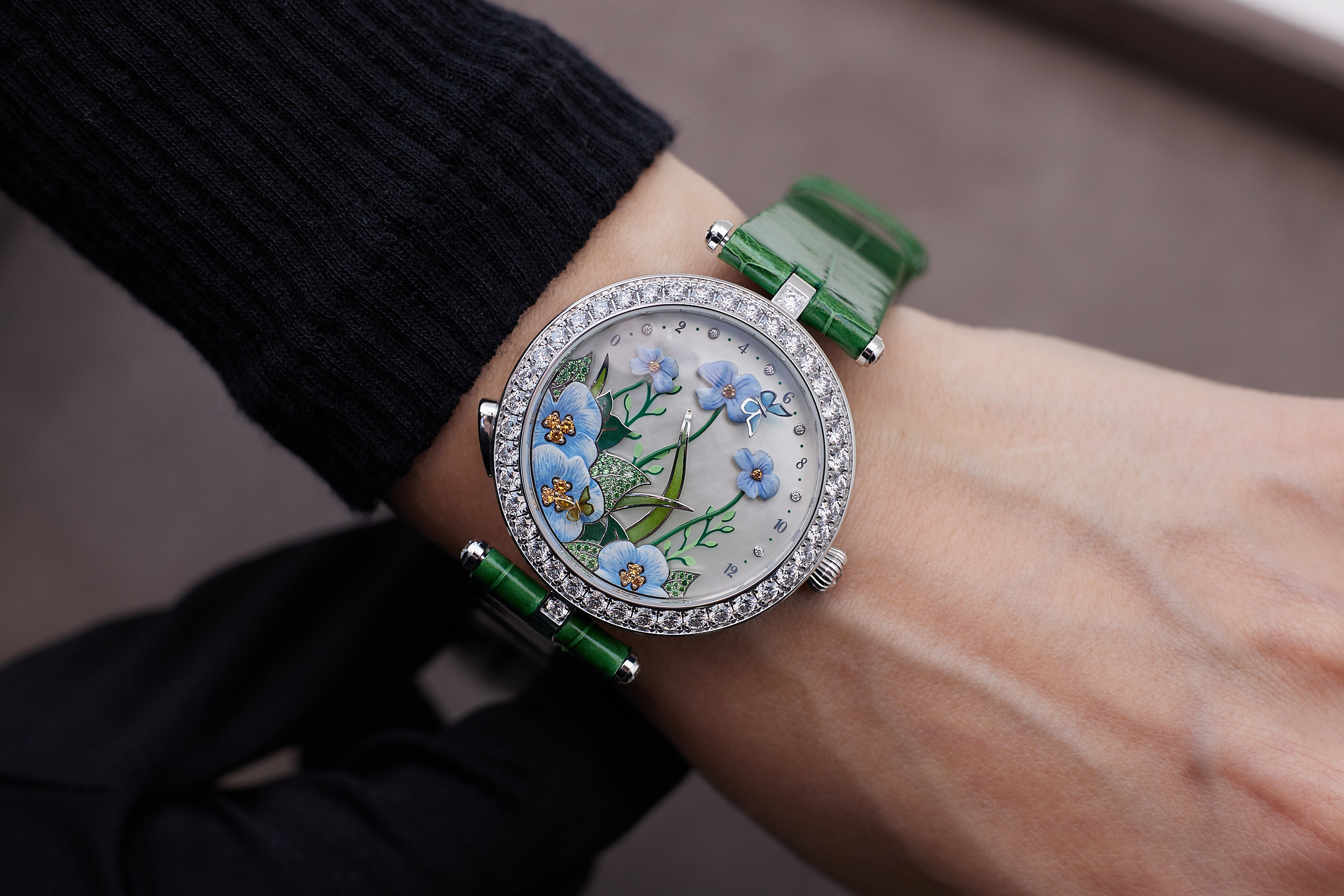On April 17 I had a chance to admire again (launch at SIHH 2013) Van Cleef & Arpels’s 2013 watch collection at the brand’s boutique at the Dubai Mall. Alban Belloir (the Managing Director for Middle East and India at Van, Cleef and Arpels) greeted the attending journalists and then two of his colleagues Anne-Lise Cohen (Senior Product Manager – Timepieces, International Marketing Department) and Patrick Brenier (Timepieces Product Manager, Dubai) talked about the watches, the inspiration for the Maison and the exceptional skill which lies behind the creation of the individual pieces.
Anne-Lise elaborated on the outstanding expertise in engraving and enamel with which the Van Cleef & Arpels “Cadrans Extraordinaries” are made. The handcraft methods all serve the purpose of depicting the stories elevated from the brand’s exceptionally rich heritage in the most beautiful way.
I would like to briefly introduce a few enamel techniques from the numerous unique work processes to you.
The Pailloné enamel
In the Pailloné technique, a very thin precious metal foil is placed between two layers of enamel. Due to the transparency of the enamel the foil lends a shiny and statuesque surface to the dial.
The first step is cutting the paillon (a piece of foil). Then the paillon that has been cut to shape is placed on the dial, adjusting it to its later position. Under a magnifier the foil is coated with the enamel technique (a coating made of melted and fused glass powder) and the whole piece is fired at a high temperature. Miniatures are painted with extreme precision onto the fired surface. Then depending on the design, the handmade gold motifs are applied onto the finished surface.
The Champlevé technique
During Champlevé, the moist powder enamel is applied to the engraved patterned metal surface, thus the enamel seeps into the patterns, and it is then fired. During the creation of the base metal pattern, extremely high quality requirements have to be met, because even the smallest unevenness can prevent the appropriate binding of the enamel. When the surface has cooled, it is polished with very fine sandpaper. The un-carved portions of the original surface remain visible as a frame for the colourful enamel designs.
The Vallonné technique
Valloné enamel is somewhat similar to the previous technique. During the metal engraving, both shallow and deeper patterns are made. When the enamel is poured onto the base, the colour adjusts to the pattern, and becomes darker where the pattern is deep and lighter where it is shallower.
This unique process gave rise for example to the stunning Constellations collection.
The Cabochonné enameling
Similar to the cabochon cut of precious stones, the aim here is also to create a rounded surface. The craftsmen do not polish any of the layers flat but preserve the rounded surface, thus creating relief-like patterns.
Miniature enamel painting
The essence of the enamel technique is creating transparent and translucent surfaces. Adding various metal oxide powders to the base mixture allows for the creation of a rather rich colour palette. Miniature enamel painting requires great concentration and precision, and technical skill which extends to every detail due to the complexity of the method (i.e. different colours require different kiln temperatures). The enameller paints the surface free-hand with very fine thin brushes under a binocular microscope.
Contre-Jour enamel
In Contre-Jour white paint pigments are used on a dark background. The first step is coating the precious metal base with a dark enamel layer. This layer must create a very smooth and clean surface as even the slightest mistake becomes visible during the repeated firing procedure.
The special paint is known as “Blanc de Limoges”, and it can be applied to the surface in various thicknesses thus the extent to which the dark background is visible will also differ. The patterns are created using precision brushes and needles.
During the firing process the colours change, thus the artist must know exactly how these materials “behave” so that the resulting finished composition is harmonious.
One of the exceptional examples of this technique is the Pont des Amoureux Poetic Complications™.
Engraving under enamel
The artist first engraves the pattern into the metal with extreme accuracy, using precision tools and chisels. Then the enamel surface is applied to the metal. Thus the enamel layer becomes even more realistic, and certain details stand out and have a 3-D effect.
After the presentation we could handle the individual pieces. It was a truly fantastic experience to see up-close and in person what decades of expertise, unfailing creativity and hundreds of work hours can create.
Photo credits: Van Cleef & Arpels, Loupiosity.com.
All registered trademarks are property of their respective owners.
All rights reserved.

